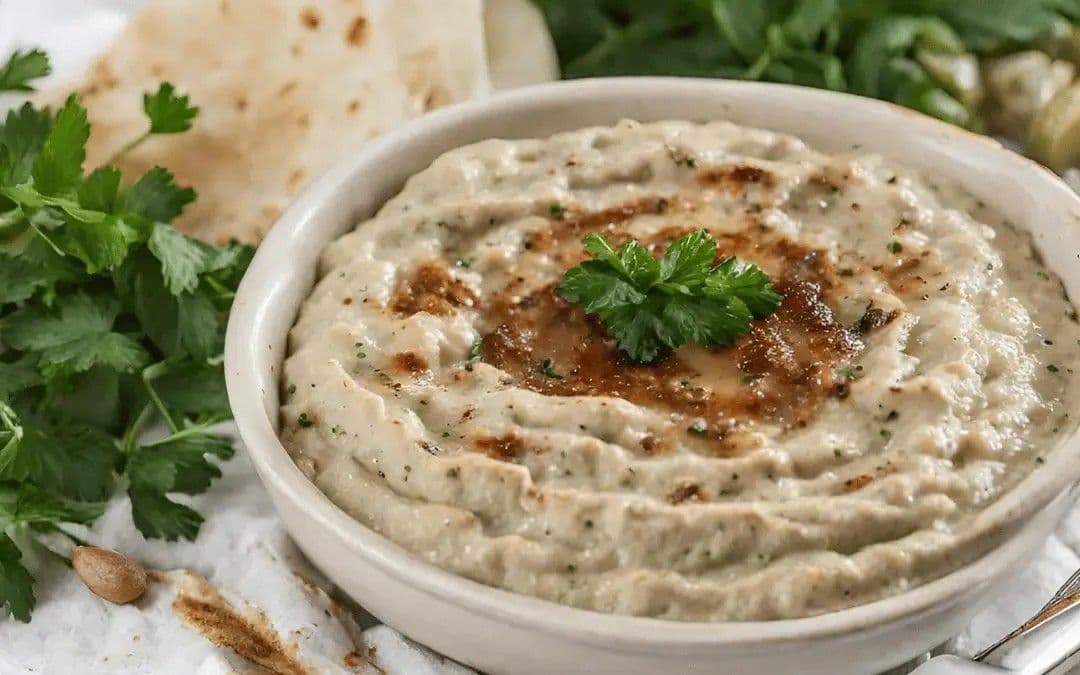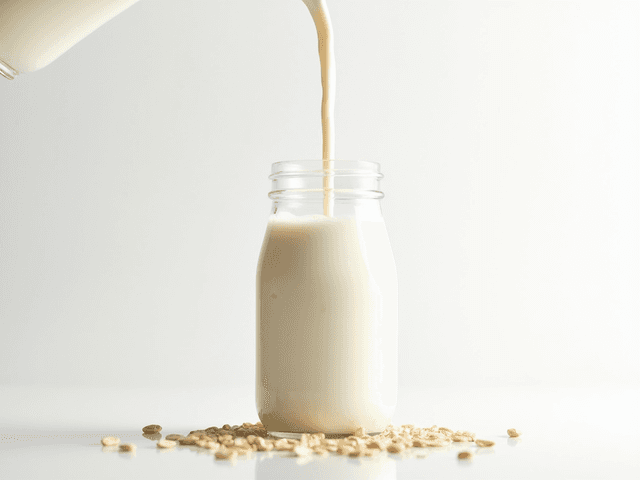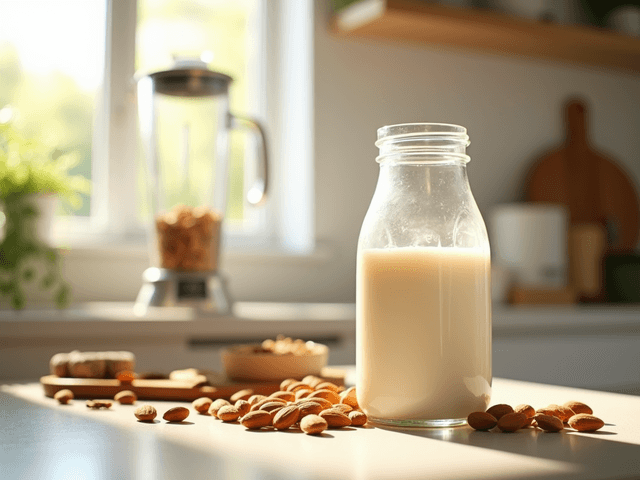Have you ever tried making baba ganoush at home, only to be disappointed? Instead of the rich, smoky, and creamy dip from your favorite Middle Eastern restaurant, you ended up with a bland, watery, or even bitter concoction. You're not alone. The secret to perfect baba ganoush isn't just in the ingredients; it's in a few crucial techniques that are often overlooked. This guide will demystify the process, guaranteeing a flawless result by focusing on three key pillars: achieving genuine smoke, mastering the texture, and understanding what this iconic dish truly is. Prepare to uncover the fascinating "identity crisis" of baba ganoush and finally learn how to make the real deal.
The Great Impostor: Understanding Baba Ganoush vs. Mutabal
Before we dive into the recipe, we need to address a major point of culinary confusion. The dip you love—the creamy, tahini-rich, smoky eggplant spread—is, in most of its Levantine homeland, not actually called Baba Ganoush.
What the West Calls "Baba Ganoush" is actually Mutabal.
Across Lebanon, Syria, and much of the Middle East, the beloved creamy dip made from charred eggplant, tahini, lemon juice, and garlic is known as Mutabal. The name comes from the Arabic word for "spiced". Its defining characteristic is the rich, nutty creaminess imparted by the tahini, which emulsifies with the eggplant and olive oil to create a luxurious texture.
So, What is Real Baba Ganoush?
Authentic Baba Ganoush is a different dish altogether. It's typically a lighter, chunkier preparation that is more like a smoky eggplant salad. This version often omits tahini entirely, instead featuring chopped vegetables like tomatoes, bell peppers, and onions, along with fresh herbs like parsley and mint. It is frequently dressed with pomegranate molasses for a tangy, sweet-and-sour finish.
The widespread mislabeling in the West likely occurred as the dish traveled globally. The name "Baba Ganoush," which translates to "pampered father," is far more evocative and memorable than "Mutabal". This more marketable name was likely attached to the most popular version of the dip—the creamy Mutabal—and it stuck. For the rest of this guide, we will honor this distinction while providing the ultimate recipe for the creamy, smoky dip everyone craves: authentic Mutabal.

The Soul of the Dish: Achieving Authentic Smoky Flavor
The single most important element that separates mediocre from magnificent baba ganoush is an authentic, deep, smoky flavor. This flavor doesn't come from shortcuts like smoked paprika or liquid smoke; it is developed by incinerating the eggplant's skin over intense, direct heat until the flesh inside is steamy, tender, and infused with smoke. The goal is to cook the eggplant until it completely collapses, looking almost "burnt beyond saving".
Here is the hierarchy of methods, from best to good, for achieving that signature char.
Method 1: The Grill (The Gold Standard)
Grilling over a live fire, especially charcoal, is the undisputed best way to achieve a complex, smoky flavor.
- Preheat a charcoal or gas grill to medium-high heat.
- Prick the eggplants all over with a fork to allow steam to escape and prevent them from exploding.
- Place the eggplants directly over the heat source. Cook for 30-40 minutes, turning occasionally with tongs, until the skin is blackened and crackly and the eggplant is completely tender and collapsing.
Method 2: The Broiler (The Best Indoor Method)
If you don't have a grill, your oven's broiler is the next best thing for generating the intense, charring heat required.
- Adjust an oven rack so it is about 6 inches from the broiler element and preheat the broiler to high.
- Place the pricked eggplants on a foil-lined baking sheet.
- Broil for about 30 minutes, turning every 5-10 minutes, until the skin is charred on all sides and the flesh is exceptionally soft.
- Crucial Tip: If the skin is fully charred but the eggplant still feels firm, turn off the broiler, switch the oven to 425°F (220°C), and roast until a skewer meets no resistance.
Method 3: The Gas Stovetop (The Traditionalist's Choice)
This method produces an incredible smoky flavor but is admittedly messy. It involves placing the eggplant directly on the grate over an open gas flame.
- Line the area around your burner with aluminum foil to catch any dripping juices for easier cleanup.
- Place a pricked eggplant directly on the stove grate over a medium-high flame.
- Using long-handled tongs, turn the eggplant every few minutes until it is charred and collapsing on all sides, which takes about 15-20 minutes.

The Recipe: Authentic Creamy & Smoky Eggplant Dip (Mutabal)
This recipe delivers the rich, creamy, and intensely smoky dip that has become a global favorite. Remember, the key to success is not in the complexity of the ingredients, but in the precision of the technique.
Core Ingredients (The "Big Five")
- Eggplant: Three medium Italian eggplants are ideal for their intense flavor and fewer seeds, though standard globe eggplants also work well. Select eggplants that are firm, glossy, and feel heavy for their size.
- Tahini: Use a high-quality, runny tahini. It should be nutty and smooth, not thick, gritty, or bitter. Always stir it very well before using, as the oil can separate.
- Lemon Juice: Freshly squeezed lemon juice is non-negotiable. Bottled juice has a metallic, dull flavor that will compromise the final dish.
- Garlic: Fresh garlic cloves are essential. The intensity can be adjusted to your taste.
- Extra-Virgin Olive Oil: A good-quality, flavorful olive oil is used to finish the dip and create the emulsion, so its taste will shine through.
Essential Kitchen Tools
- Grill, broiler, or gas stovetop
- Foil-lined baking sheet (for broiler method)
- Large mixing bowl
- Fine-mesh strainer
- Salad spinner (optional, but highly recommended for superior texture)
- Fork or whisk
- Chef's knife
Step-by-Step Instructions
- Cook the Eggplant: Using your preferred method from Section 2 (grill, broiler, or stovetop), cook the eggplants until they are deeply charred and completely collapsed.
- Steam and Peel: Transfer the hot eggplants to a bowl and cover with plastic wrap, or wrap them in foil. Let them steam for 15 minutes. This step makes the skin incredibly easy to peel off. Once cool enough to handle, slit the eggplants open and scoop out the soft flesh, discarding the skin.
- DRAIN THE FLESH (The Secret to a Creamy, Not Watery, Dip): This is the most critical step for texture. Eggplant is full of water, which will make your dip runny and dilute its flavor if not removed.
- Place the eggplant flesh in a fine-mesh strainer set over a bowl and let it drain for at least 30-60 minutes.
- The Pro Hack: For superior results in under a minute, place the eggplant flesh in a salad spinner and spin gently. This will extract a surprising amount of water, leaving you with concentrated, flavorful eggplant pulp.
- Mash, Don't Pulverize: Transfer the drained eggplant to a mixing bowl. Using a fork, vigorously mash and whip the eggplant until it breaks down into a rough, chunky paste. For the most authentic texture,avoid a food processor, which can make the dip gummy and hummus-like. If you prefer a perfectly smooth texture, however, a food processor can be used.
- Create the Emulsion: This technique prevents a greasy dip. Add the minced garlic and lemon juice to the mashed eggplant and whisk vigorously for about a minute. Next, add the tahini and whisk hard until it's fully incorporated. Finally, while whisking constantly, slowly drizzle in the olive oil in a thin, steady stream. The mixture will lighten in color and become beautifully creamy and emulsified.
- Season and Rest: Stir in finely chopped fresh parsley and season to taste with salt. For the best flavor, cover and refrigerate for at least one hour to allow the flavors to meld together.
Pro-Level Troubleshooting: Avoiding Common Baba Ganoush Fails
Even with a great recipe, things can go wrong. Here’s how to diagnose and fix the most common issues.
Problem 1: My Dip is Bitter!
- Cause A: The Eggplant Itself. Older, seedy eggplants can be inherently bitter. Choose fresh, smaller eggplants when possible.
- Cause B: Undercooking. If the eggplant isn't cooked until it's completely soft and collapsed, it can retain a bitter taste.
- Cause C: Bad Tahini. This is a frequent culprit. Old or low-quality tahini can be intensely bitter. Always taste your tahini before adding it.
- Cause D: Charred Skin. Even small flecks of the blackened skin can impart an acrid, bitter flavor to the dip. Be diligent when peeling.
Problem 2: My Dip is Watery and Runny!
- Cause: This problem has one cause and one solution: you did not remove enough moisture from the cooked eggplant.
- Solution: Do not skip the draining step. Use a fine-mesh strainer for at least 30 minutes, or preferably, use the salad spinner hack for the best texture.
Problem 3: The Garlic is Too Sharp and Overpowering!
- Cause: Raw garlic can have a harsh, spicy bite, especially if left in large pieces.
- Solution 1 (Mellowing): Finely mince the garlic, sprinkle it with a pinch of salt, and use the side of your knife to mash it into a smooth paste. This tames its raw intensity.
- Solution 2 (Roasting): For a sweet and mild garlic flavor, wrap the garlic cloves in foil and roast them alongside the eggplant.
Problem 4: My Dip is Greasy!
- Cause: The olive oil was added too quickly and failed to emulsify, separating from the other ingredients.
- Solution: Revisit the emulsion technique. Whisk the eggplant base constantly while adding the olive oil in a very slow, thin stream. This allows the oil to incorporate properly, creating creaminess without greasiness.
How to Serve Baba Ganoush Like a Pro
Once you've mastered the dip, serving it beautifully is the final touch. It's incredibly versatile and can be the star of a mezze platter or a secret-weapon ingredient in other dishes.
The Classic Mezze Platter
- Breads: Serve with warm, soft pita bread, crispy pita chips, or slices of crusty baguette.
- Fresh Vegetables: Offer a colorful assortment of cucumber slices, bell pepper strips, carrot sticks, and cherry tomatoes for dipping.
- Perfect Companions: Arrange the baba ganoush alongside other classic dips like hummus and tzatziki, and add briny olives, crumbled feta cheese, and crispy falafel to the platter.

Beyond the Dip: Creative Uses
- Sandwich and Wrap Spread: Use it as a healthy and flavorful alternative to mayonnaise on sandwiches and in wraps. It's especially delicious in a falafel or chicken shawarma pita.
- Base for Grilled Meats: Spread a generous layer on a plate and top it with grilled lamb kebabs, kofta, or chicken skewers.
- Grain Bowl Booster: Add a large dollop to a quinoa, farro, or rice bowl to add creaminess, smoke, and flavor.
- Smoky Pizza Base: Swap out traditional tomato sauce for baba ganoush on your next homemade pizza or flatbread for a unique and delicious twist.
Wine Pairings
The smoky, earthy, and tangy profile of baba ganoush pairs wonderfully with specific wines. Consider a Rhône Valley style GSM (Grenache, Syrah, Mourvèdre) blend, a soft Zinfandel, or a crisp, acidic Sauvignon Blanc to complement the flavors.
Authentic Variations & Customizations
Once you've mastered the classic Mutabal, feel free to experiment with these traditional additions.
- For Extra Creaminess: Stir in a tablespoon or two of full-fat Greek yogurt or labneh. This is a common variation, particularly in Syria, that adds a pleasant tang and even richer texture.
- For a Tangy, Fruity Note: Garnish with ruby-red pomegranate seeds for a burst of sweetness and a beautiful visual contrast. A drizzle of pomegranate molasses also adds a fantastic sweet-tart complexity.
- Spice it Up: While not always traditional in Mutabal, a few spices can enhance the flavor. A pinch of smoked paprika will amplify the smokiness, sumac adds a bright, lemony tang, and a touch of cumin provides earthy depth.
- The True Baba Ganoush (Bonus Recipe): To try the authentic, tahini-free eggplant salad, combine your smoky, mashed eggplant with finely chopped tomatoes, bell peppers, onion, fresh parsley, and toasted walnuts. Dress it with lemon juice, olive oil, and a generous drizzle of pomegranate molasses.

Frequently Asked Questions
Q: What is the real difference between Baba Ganoush and Mutabal?
A: In the Levant, Mutabal is the creamy, smoky dip made with tahini that most Westerners know as Baba Ganoush. True Baba Ganoush is often a lighter, tahini-free eggplant salad with chopped vegetables like tomatoes and peppers.
Q: My baba ganoush tastes bitter. What did I do wrong?
A: Bitterness usually comes from undercooked eggplant, using old or poor-quality tahini, or accidentally mixing in bits of the charred skin. Ensure your eggplant is cooked until completely collapsed and be careful when peeling.
Q: How should I store homemade baba ganoush, and can I freeze it?
A: Store it in an airtight container in the refrigerator for up to 5 days; the flavor often improves after a day. Yes, you can freeze it in an airtight container for up to six months, though the texture may change slightly upon thawing.







